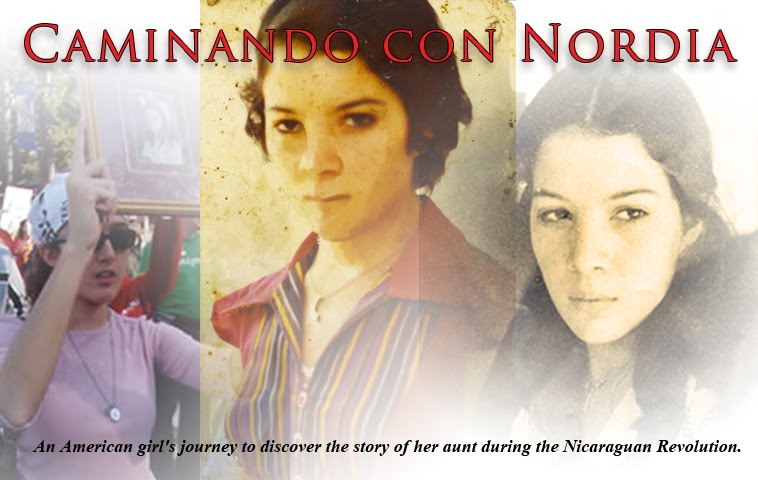 |
| My mother and aunt's original songbook |
Navidad en
Libertad
Carlos Mejía
Godoy
Cuando
desempaques tus regalos
niño de lujosa
vecindad
piensa en tantos
niños que no saben
para qué es la
navidad
piensa en el
chavalo limpiabotas
que su
nochebuena pasará
en una banqueta
dura y fría
del atrio de Catedral
Feliz Navidad
feliz Navidad
en Justicia y
Libertad
feliz Navidad
un mundo
mejor
sin miseria
ni opresion
Esa metralleta
de juguete
que te trajo
este año Santa Claus
es el aguinaldo
cariñoso
que te manda el
Tío Sam
Hoy necesitamos
más escuelas
mas cultura y
más educación
son más
importantes cien maestros
que un blindado
batallón
Feliz
Navidad...
Tiene que venir
pronto ese día
cuando no sea la
Navidad
sólo el
privilegio de los ricos
sino de la
Humanidad
Que venga
Venancio, Pedro y Mincho
la Maruca,
Lencho y Pantaleón
vamos a cantar
el Villancico
de nuestra
Liberación.
Feliz
Navidad....
Hablado: Feliz
Libertad te deseo, Pueblo mío.
Feliz Libertad niño de Acahualinca y Miralagos. Feliz Libertad niño mutilado del
Vietnam. Feliz libertad niño huérfano
de Nagasaki. Feliz Libertad,
negrito murruco del Congo. A todos
los niños del Tercer Mundo…Feliz Libertad.
Translation:
Christmas in
Liberty
When unpacking
your gifts
luxurious
neighborhood boy
think of the
many children who do not know
what is
Christmas for.
Think of the
shoeshine boy
That will spend
Christmas Eve
On the cold hard
sidewalk of the
Cathedral atrium
Merry Christmas
Merry Christmas
in Justice and
Freedom
Merry Christmas
a better world
without misery
nor oppression
That machine gun
toy
that Santa Claus
is the
affectionate bonus
sent from Uncle
Sam
Today we need
more schools
more culture and more education
One hundred teachers
that an armored
battalion
Merry Christmas
...
Soon the day must come
When Christmas is not
only the
privilege of the rich
but of Humanity
Come Venancio,
Peter and Mincho,
Maruca, Lencho and
Pantaleon,
We will sing the
carol
of our Liberation.
Merry Christmas
....
Spoken: I wish you, Happy
Freedom, my people. Happy Freedom, child of Acahualinca and Miralagos.
Happy Freedom, maimed child of Vietnam. Happy freedom, orphan of Nagasaki. Happy
Freedom, dark curly-haired child of the Congo. To all the children in the Third World ...Happy
Freedom.


